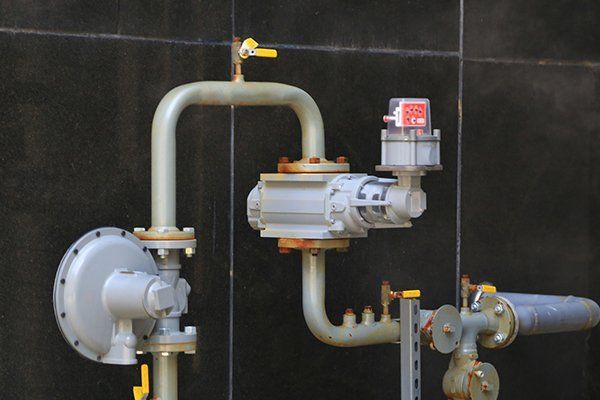Are you currently hunting for content about Backflow Testing?

Yes, you require to backflow test your house's water supply to ensure that the water is devoid of toxic substances and also damaging levels of chemicals. You need to not try to do heartburn screening on your own since of the tools called for and room for error. We advise that you call a professional plumber every couple of years to examine your water.
What is Heartburn?
Simply put, backflow is when water moves upwards-- the opposite instructions in the plumbing system. This is likewise called "backpressure." When the water relocates this direction, it can combine with dangerous contaminants and present a danger.
What Creates Backflow?
A typical reason for backflow is a loss of water pressure that triggers the water to siphon back right into the water. An example is cleaning a paint bucket utilizing a hose. You fill up the paint bucket up with water, leaving the hose in the pail. After a long time, there is a loss in water pressure as well as the hose starts to suck the water back into the water supply. As you can visualize, there are now chemicals from the paint that are going into the water supply, potentially posing a risk. Numerous individuals are not also mindful of heartburn screening, but there are lots of reasons why it's so important.
Heartburn Screening is Required by Law in Specific Cities
Depending on where you live, you may in fact be needed by regulation to backflow examination your regulation. Iowa City maintains a record of all residential properties served by the city's water supply.
You Can Stop Backflow
The main function of a heartburn device is to avoid water from moving in reverse into your water supply. Plumbing professionals mount the device on the pipes in your house to make sure that the water just streams in the proper instructions.
Heartburn Can Influence Both You and also Your City
Because dangerous backflow can affect the public water supply in addition to a single building, lots of cities develop heartburn standards. Modern cities have backflow devices in location that secure the water supply that comes from the majority of residences and commercial homes. The genuine risk originates from irrigation systems, which can harm the water supply with toxic fertilizers, manure, and various other chemicals.
Call a Plumber to Check for Backflow Before It is Too Late
A plumbing firm can rapidly test your house's water to identify if there are any type of dangerous chemical degrees. And if you do uncover that your water has high degrees of contaminants, a plumber can conveniently install a heartburn avoidance gadget.
Yes, you need to backflow examination your house's water supply to ensure that the water is complimentary of contaminants and damaging degrees of chemicals. A common reason of backflow is a loss of water stress that creates the water to siphon back into the water supply. After some time, there is a loss in water stress and also the hose pipe starts to suck the water back into the water supply. The major function of a heartburn tool is to prevent water from flowing in reverse right into your water supply. Numerous cities establish heartburn guidelines since unsafe backflow can impact the public water supply in addition to a single structure.
WHY DOES BACKFLOW TESTING NEED TO BE DONE EVERY YEAR
What Is Backflow?
Toxic gas backing up into a building is one example of potential backflow issues, but backflow can occur in many other ways.
Backflow is generally referred to as the reversal of a liquid or gas in a plumbing system.
Most issues for the public occur with backflow resulting in contaminated drinking water. If you look up backflow issues online you’ll probably find references to “potable” water. That means drinking water.
There have been backflow issues in the past with drinking water. Chemicals, sewage and other contaminants have found their way into drinking water causing health issues for those that count on the fresh water.
What Causes Backflow?
In a residence or commercial building water generally flows one way. This normal flow is usually driven by consistent pressure in the water and waste system.
Anything that changes the normal pressure in the system can lead to backflow.
Fire hydrant use or malfunction can reverse the normal pressure in the system on a city line, but backflow can occur in a number of different ways.
Sometimes backpressure might be caused by someone using a garden hose and submerging the end of the hose in a pool of liquid. If pressure is lost the flow could reverse and contaminants could be released into the drinking water.
Anytime there is a connection between contaminants and the drinking water there is potential for a backflow issue. Sometimes these connections are not immediately obvious like the garden hose connecting to a building’s drinking water supply.
Backflow Regulations
The Environmental Protection Agency (EPA) provides guidelines and regulations for state and local governments regarding backflow. State and local governments also have their own guidelines and regulations for backflow prevention.
Arizona has its own backflow regulations.
Due to issues with backflow in the past, regulations require backflow preventer devices to be used in nearly all residential and commercial buildings.
A backflow preventer is a device that prevents backflow as cross-connection points where potential backflow issues may occur.
While backflow is not a common occurrence, preventers are in place to make sure there is no contamination should something malfunction or go wrong with a building’s water supply.

I was made aware of that write-up on What is Backflow Testing? from a good friend on a different website. If you please take a moment to distribute this page if you enjoyed reading it. I recognize the value of reading our article about Backflow Prevention.
We've got answers!